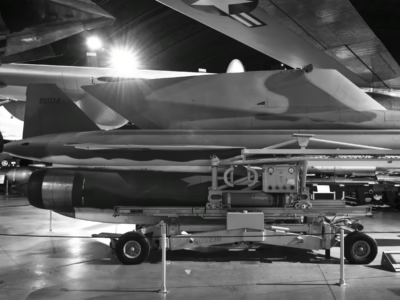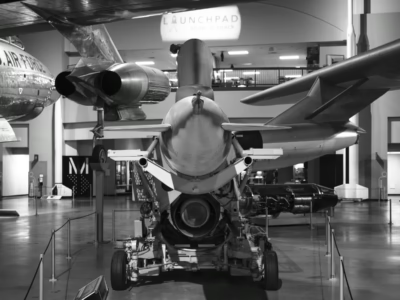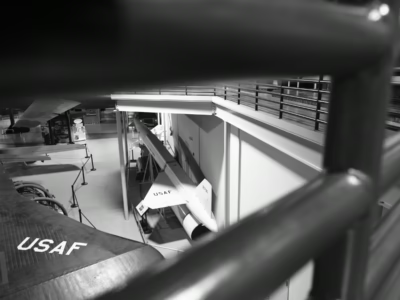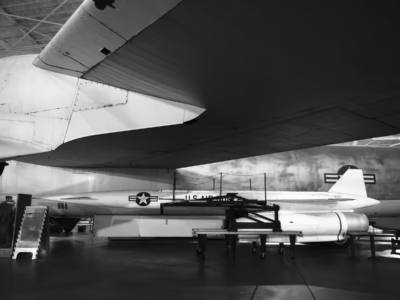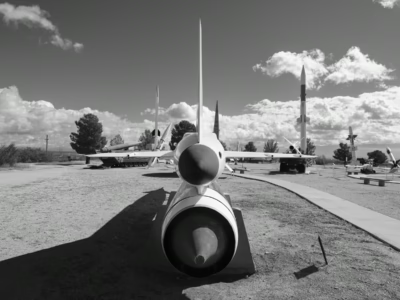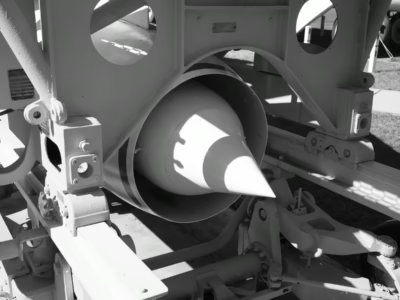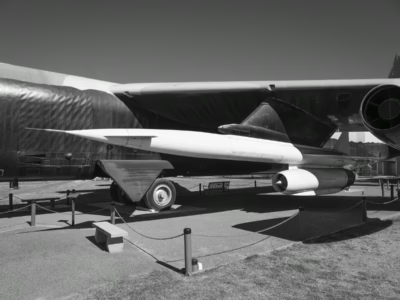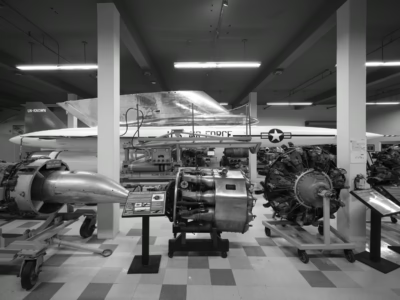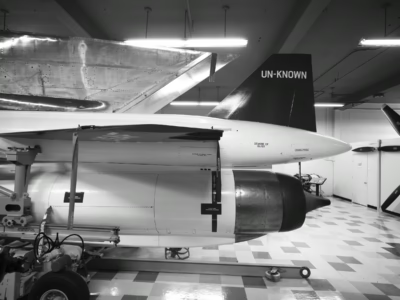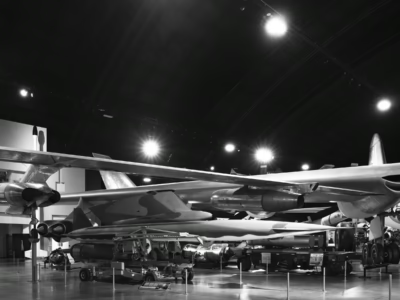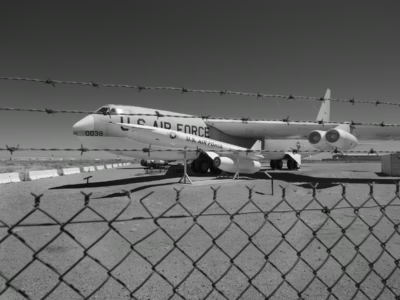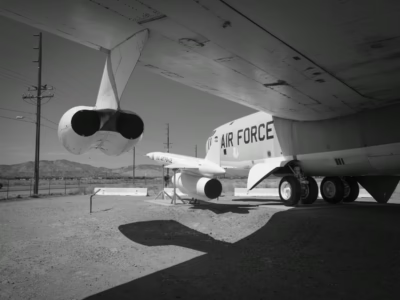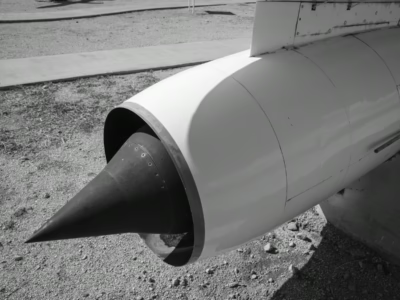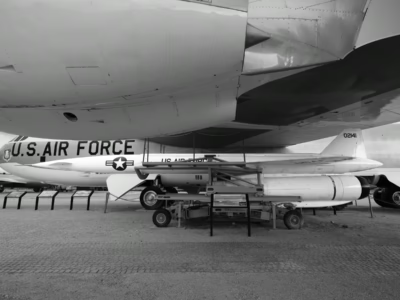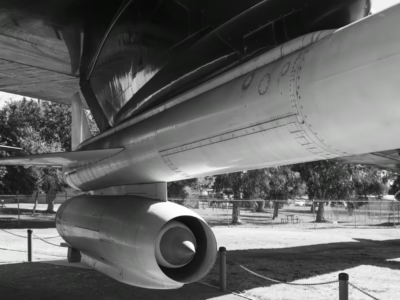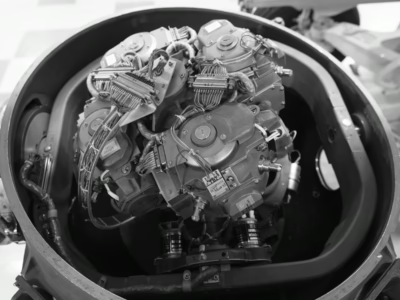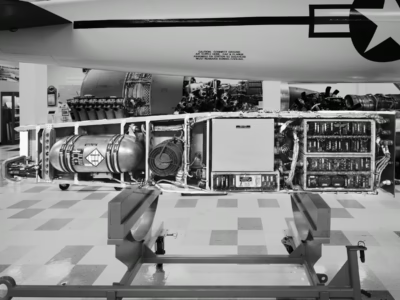Hound Dog
unjammable Air attack from beyond enemy SAM range
Explosive Power
Up to 1.45 megatons
Hiroshima Equivalent Factor
Up to 97x
Dimensions
42 ft, 6 inches x 28 inches (not counting engine)
Weight
10.147 lbs.
Range
785 miles, Mach 2.1
Year(s)
1961–1975
Purpose
Attack ground targets out of range of SAM missile defenses
About THE Hound Dog
Forthcoming…
Gallery
Nukemap
NUKEMAP is a web-based mapping program that attempts to give the user a sense of the destructive power of nuclear weapons. It was created by Alex Wellerstein, a historian specializing in nuclear weapons (see his book on nuclear secrecy and his blog on nuclear weapons). The screenshot below shows the NUKEMAP output for this particular weapon. Click on the map to customize settings.

Videos
Click on the Play button and then the Full screen brackets on the lower right to view each video. Click on the Exit full screen cross at lower right (the “X” on a mobile device) to return.
Further Reading
- Wikipedia, Designation Systems
- The most detailed history of the Hound Dog That I have found is at Missilery.info.
- The Travis Aviation Museum is especially proud of their Hound Dog (as they should be–it is a beautiful restoration, complete with computer and navigational systems on display).
- This article in This Day in Aviation is primarily about the B-52H but check out the photo of the crashed B-52 with the two Hound Dogs crumpled in the background.
- An overview of the Hound Dog by Alchetron, an online encyclopedia. Of special note is its description of the different ways the Hound Dog might be used in an attack and a detailed list of surviving examples of the missile.
- An unusually good photograph of a B-52 in flight with a Hound Dog missile mounted under each wing.
- Another interesting photo, this one appears to be a press photo, showing Air Force personnel next to a Hound Dog at Wright-Patterson AFB, in Ohio.
- The guidance system of the Hound Dog was cutting-edge for its time. There appears to be only one example of the unit on display (see my image in the gallery section, above). The Institute of Navigation has a short overview of the unit with a photo from the Travis Aviation Museum (with additional links) and here is a detailed article on the system from the same web page. This might be of interest: When saw this unit in person at the Travis museum I gently nudged it (there was no dome over it) and it floated like it was new.
